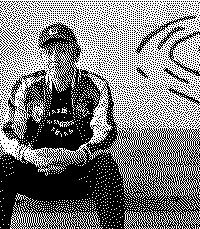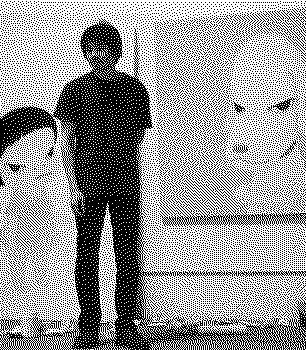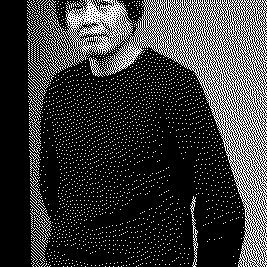Artists/Yoshitomo Nara
Fast Facts
Child-Like Figures
Nara is famous for his depictions of children, often portrayed with a mix of sweetness and mischief. These figures, appearing somewhat cartoonish, often have large heads, wide eyes, and are sometimes shown with weapons or in confrontational stances.
Influence of Punk Rock and Folk Music
His work is notably influenced by punk rock and folk music. Nara has said that music is a significant source of inspiration for his art, and this is reflected in the rebellious, spirited nature of his characters.
Simple Yet Profound
While his art appears simple in its execution, it often conveys deep emotions and a sense of solitude. The expressions of the characters are typically nuanced, evoking empathy and introspection.
Cultural Blend
Nara's work blends both Eastern and Western cultures. He spent time studying in Germany, and this experience influenced his style, blending Japanese artistic traditions with Western art movements.
Wide Range of Mediums
Though best known for his paintings, Nara also works in a variety of other mediums, including sculpture, drawing, and installations. His sculptures often bring his two-dimensional characters into the three-dimensional world.
Connection with Contemporary Issues
Some of his works subtly reference social and political issues, though he often leaves the interpretations open to the viewers.
Biography



Yoshitomo Nara, born on December 5, 1959, in Hirosaki, Japan, is a contemporary artist renowned for his paintings, sculptures, and drawings of enigmatic, wide-eyed children and animals.
Nara's work, often characterized by its deceptively simple, childlike style, explores themes of rebellion, isolation, and introspection. Growing up in post-war Japan, Nara was deeply influenced by the popular culture of his youth, including manga, anime, and Western rock music, all of which have significantly impacted his artistic sensibility.
Nara's education at the Aichi Prefectural University of Fine Arts and Music, where he completed both his bachelor's and master's degrees, provided him with a strong foundation in traditional Japanese art. However, it was his time in Germany, studying at the Kunstakademie Düsseldorf in the late 1980s and early 1990s, that profoundly shaped his artistic direction. In Germany, Nara was exposed to the works of Western contemporary artists and developed a distinct style that merges Eastern and Western influences. His encounters with German Neo-Expressionism and the works of artists such as Georg Baselitz and Jörg Immendorff were particularly formative.
Nara's breakthrough came in the mid-1990s, with his first solo exhibitions in Tokyo and Osaka. His works quickly gained popularity, resonating with a global audience. The emotional intensity and vulnerability expressed in the eyes of his child-like figures have been interpreted as reflections of his own experiences and the broader human condition. Nara's art often conveys a sense of loneliness and melancholy, juxtaposed with a rebellious spirit, which he attributes to his solitary childhood and the socio-political climate of Japan.
Throughout his career, Nara has held numerous solo exhibitions worldwide, including major retrospectives at the Yokohama Museum of Art (2012) and the Los Angeles County Museum of Art (2020). His works have also been featured in prestigious group exhibitions, cementing his status as one of the most influential contemporary artists of his generation. Nara's ability to blend innocence with a punk ethos has made his work particularly appealing to younger audiences, as well as collectors and critics.
In addition to his visual art, Nara has collaborated with various musicians and designers, further expanding his influence beyond the traditional art world. His collaboration with Japanese designer Issey Miyake and the American band Wilco are notable examples. These interdisciplinary projects highlight Nara's versatility and his commitment to exploring new creative avenues.
Nara's works are held in numerous public and private collections, including the Museum of Modern Art in New York, the San Francisco Museum of Modern Art, and the Takamatsu City Museum of Art in Japan. His ability to evoke profound emotional responses through seemingly simple imagery continues to captivate audiences, ensuring his lasting impact on contemporary art.
Nara, Y. (2020). Nara Yoshitomo: Los Angeles County Museum of Art. Los Angeles County Museum of Art.
Heartney, E. (2005). Yoshitomo Nara: Nobody's Fool. Abrams.
Wullschlager, J. (2020, October 9). Yoshitomo Nara: childhood dreams and fears. Financial Times. Retrieved from FT.com.
Solomon, A. (2020, April 2). The Melancholy World of Yoshitomo Nara. The New York Times Magazine. Retrieved from NYTimes.com.
Bodies of Work
-

Little Girls
-

Guitar Girls
-

Dogs
-

FRP Dishes
-

Envelope Drawings
-

Works on Cardboard
-

Works on Wood
-

Cup Kids
-

The Little Pilgrim (Night Walking)
-

Pilgrim Heads
-

Bronze Heads
-

Miss Forest
-

Pup Cup
-

The White Ghost
-

Your Dog
-

Dog from Screen Memory
-

Dogs From Your Childhood
-

Big Pup Head
-

Our Thai House Mini
-

Puff Marshie
Importance
Yoshitomo Nara's significance in the art world is marked by several key factors that have contributed to his widespread recognition and influence:
Distinct Dreamlike Visual Style
Nara's art is instantly recognizable, featuring children and animals with large, penetrating eyes that convey a spectrum of emotions, from innocence to rebellion. This distinctive style bridges the gap between Japanese pop culture (manga and anime) and fine art, making his work accessible and appealing to a broad audience (The Art Story) (Anita Louise Art).
Exploration of Childhood and Rebellion
Nara's subjects often appear with objects like knives or in defiant poses, challenging traditional notions of childhood innocence. This thematic focus invites viewers to reconsider the complexity of youth and the inherent rebellion against societal norms, reflecting broader existential themes (The Art Story) (Anita Louise Art).
Cultural and Historical References
His work is deeply infused with references to Japanese culture, including traditional theatre masks and Ukiyo-e prints, as well as Western punk rock and folk music. This blend of influences creates a rich, multicultural layer within his art, contributing to its global appeal (Anita Louise Art).
Versatility Across Mediums
Nara has exhibited a remarkable ability to work across various mediums, including painting, sculpture, drawing, and ceramics. His versatility showcases his broad artistic skills and enhances his narrative, allowing for a more profound exploration of his themes across different forms (Anita Louise Art).
Global Appeal and Influence
Nara's work has a universal quality that resonates with diverse audiences worldwide. His exhibitions in prestigious galleries and museums around the globe attest to his international appeal and the universal themes he explores through his art (Wikipedia) (Anita Louise Art).
Impact on Contemporary Art and Pop Culture
Nara is a pivotal figure in the Superflat movement, which seeks to blur the boundaries between high art and pop culture. His work has influenced not only the art world but also design, fashion, and music, underscoring his role as a cultural icon (Wikipedia).
Personal and Emotional Depth
Nara's art is deeply personal, drawing from his own childhood experiences and emotions. This authenticity resonates with viewers, offering a window into the artist's inner world while inviting reflection on their own experiences and feelings (The Art Story).
Engagement with Social and Political Themes
While Nara's work is often noted for its aesthetic appeal, it also engages with deeper social and political themes, including the effects of globalization, the tension between individuality and conformity, and the aftermath of natural disasters like the 2011 Japanese earthquake and tsunami (Anita Louise Art).
Innovative Exhibitions and Collaborations
Nara has been involved in various innovative exhibitions and collaborative projects that push the boundaries of traditional art display and engage with the community in meaningful ways, further solidifying his impact on the contemporary art scene (Wikipedia).
Technique
Yoshitomo Nara's technique and artistic approach are defined by a unique blend of cultural influences, personal experiences, and a distinctive visual language that bridges the gap between traditional Japanese art and Western pop culture.
Multicultural Influences
Nara's time in Germany profoundly influenced his artistic style. Exposed to Neo-Expressionism and punk rock, he incorporated these elements into his work, blending them with Japanese pop culture. This multicultural influence is a testament to his diverse sources of inspiration, ranging from punk music album covers to folk music, shaping his unique visual language (Christie's).
Fusion of Traditional and Modern Elements
Upon returning to Japan after a 12-year stint in Germany, Nara began to incorporate traditional Japanese elements such as Otafuku and Okame theatrical masks and poses reminiscent of manga characters into his artwork. This fusion creates a distinctive blend that pays homage to his cultural heritage while engaging with contemporary themes and aesthetics (Christie's).
Association with Superflat Movement
As part of the Superflat group, which critiques Japan’s consumerist culture using bright colors and cartoon motifs, Nara's work uses this style to examine deeper societal issues. His artworks often feature seemingly innocent children and animals that reveal darker undertones upon closer inspection, using this contrast to engage with themes of innocence, aggression, and the complexities of human nature (Christie's).
Evolution of Artistic Technique
Over the years, Nara's technique has evolved, showing a transition from vibrant colors and bold lines to a more nuanced, painterly approach. His later works display a softer palette and more refined compositions, reflecting a deeper exploration of emotional depth and human experience. This shift is exemplified in works like "Knife Behind Back," where the use of softer colors and more detailed expressions indicate a move towards humanizing his characters, showing a progression in his approach to portraying the innocence and complexity of youth (The Art Story).
Exploration of Sculpture and Other Mediums
Besides painting, Nara has also ventured into sculpture, experimenting with various materials to bring his iconic characters into three-dimensional forms. His sculptures often retain impressions from his hands, coated in liquid metal to produce effects reminiscent of ancient ceramics, demonstrating his ability to blend modern and historical artistic techniques (Christie's).


